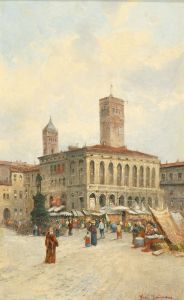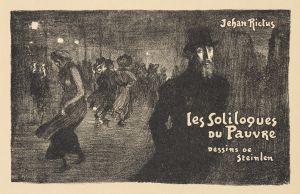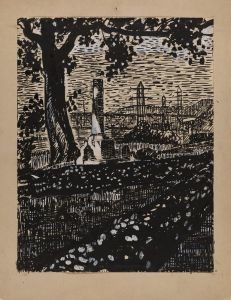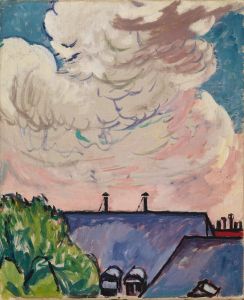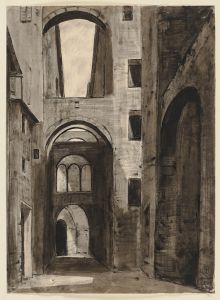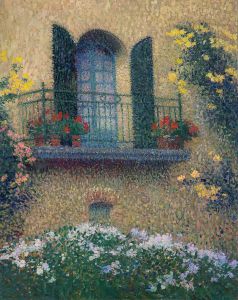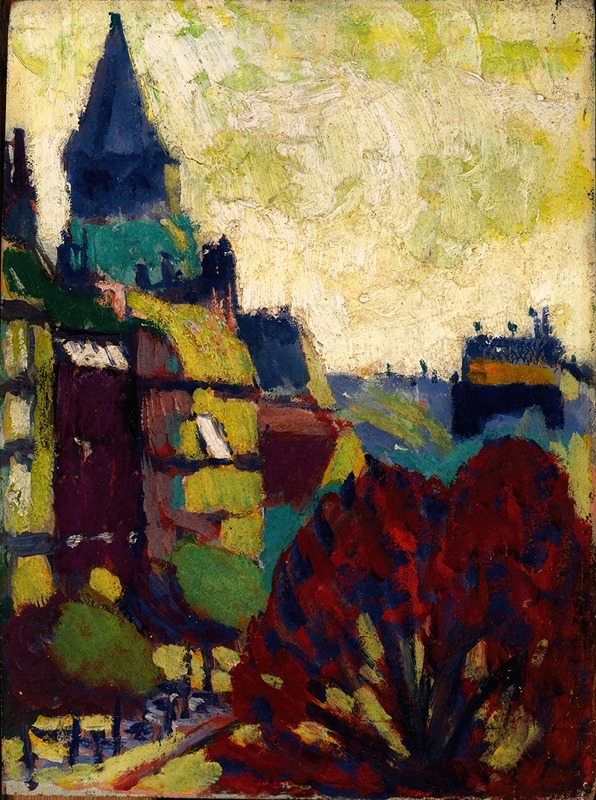
St. Germain des Pres
A hand-painted replica of Henry Lyman Saÿen’s masterpiece St. Germain des Pres, meticulously crafted by professional artists to capture the true essence of the original. Each piece is created with museum-quality canvas and rare mineral pigments, carefully painted by experienced artists with delicate brushstrokes and rich, layered colors to perfectly recreate the texture of the original artwork. Unlike machine-printed reproductions, this hand-painted version brings the painting to life, infused with the artist’s emotions and skill in every stroke. Whether for personal collection or home decoration, it instantly elevates the artistic atmosphere of any space.
Henry Lyman Saÿen (1875–1918) was an American artist and inventor, known for his contributions to both the scientific and artistic fields. He was a pioneer in the use of X-ray technology, having worked with Thomas Edison and contributed to the development of early X-ray tubes. Alongside his scientific endeavors, Saÿen was also an accomplished painter, particularly influenced by the Post-Impressionist and Fauvist movements during his time in Europe.
"St. Germain des Prés" is one of Saÿen's notable works, painted during his stay in Paris in the early 20th century. The painting depicts the historic St. Germain des Prés neighborhood, one of the oldest areas in Paris, known for its rich cultural and intellectual history. Saÿen's artistic style in this work reflects his exposure to the avant-garde movements of the time, characterized by bold colors, dynamic brushstrokes, and a modernist approach to composition. His use of vibrant hues and expressive techniques aligns with the influence of artists such as Henri Matisse and the Fauves, whose works were prominent in Paris during Saÿen's residence.
The painting captures the essence of the St. Germain des Prés area, which was a hub for artists, writers, and philosophers. While specific details of the scene depicted in the painting are not widely documented, it is believed to represent Saÿen's interpretation of the lively and historic atmosphere of the neighborhood. The work demonstrates his ability to blend scientific precision with artistic creativity, a hallmark of his dual career.
Henry Lyman Saÿen's artistic output was relatively limited due to his untimely death in 1918 at the age of 43. However, his works, including "St. Germain des Prés," remain significant for their unique perspective and innovative approach. Today, his paintings are appreciated for their historical and artistic value, offering a glimpse into the intersection of art and science during the early 20th century.
Further details about the specific provenance or current location of "St. Germain des Prés" are not widely available. Saÿen's contributions to both art and science continue to be recognized, though his artistic legacy is less well-known compared to his scientific achievements.





